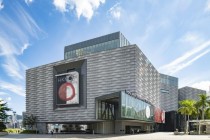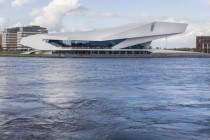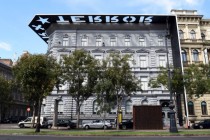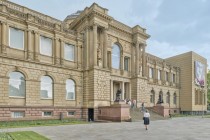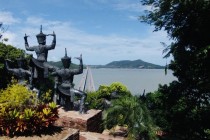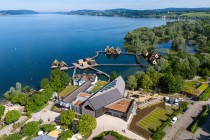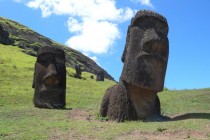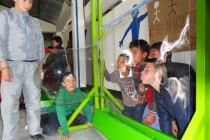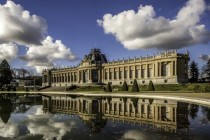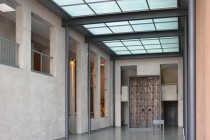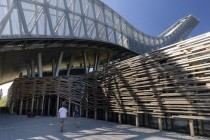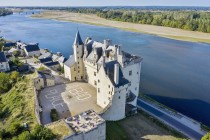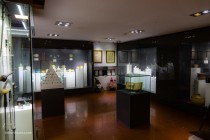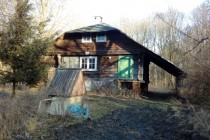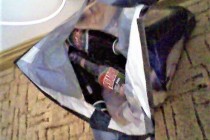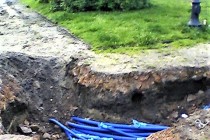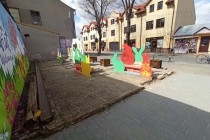The origins of the Auckland War Memorial Museum date back to 1852.
Part of the museum is the War Memorial and the surrounding Court of Honor dedicated to those who died in World War I and II.
The museum has collected 1.5 million natural specimens from the fields of palaeontology, botany, entomology, geology, terrestrial vertebrates and marine biology.
The museum houses a large collections on the history of New Zealand, the Māori culture and the cultures of the Pacific region. The collections include three complete wooden buildings, including the Hotunui, a traditional Māori meeting house from 1878 from the Thames region, and the war canoe (waka) Te Toki a Tapiri from 1830.
The Museum maintains the legacy of Edmund Hillary, the first man to reach the world's highest peak, Mount Everest, with Sherpa Tenzing Norgay.
The area of the museum is 16,000 square meters.
| Rank | Voting | Museum | Country | Location | Website | Type | More | |
|---|---|---|---|---|---|---|---|---|
| 311. | 194 | Auckland War Memorial Museum | New Zealand | Auckland | Memorial, history,... natural history | More | ||
| 312. | 171 | Natural History Museum Berlin | Germany | Berlin | Natural history | More | ||
|
The Natural History Museum - Leibniz Institute for Evolution and Biodiversity Science (Museum für Naturkunde [MfN] - Leibniz Institut für Evolutions und Biodiversitätsforschung) dates back to 1810.
MfN is one of the world's most important research institutions in the field of biological and geoscientific evolution and biodiversity. MfN has in its collections, inter alia, the largest mounted dinosaur in the world (a Giraffatitan skeleton) and the largest piece of amber in the world. MfN stores over 30 million objects in the field of zoology, palaeontology, geology and mineralogy, of which 0.02% is exhibited. The exhibition area is 4,400 square meters. Dinosaur Hall in the Museum für Naturkunde Berlin, visible, among others, a fragment of a Giraffatitan brancai skeleton. Photo: Thomas Rosenthal |
||||||||
| 313. | 174 | Hong Kong Museum of Art | China | Hong Kong | Art | More | ||
|
Hong Kong Museum of Art (HKMoA) was founded in 1962.
The entire HKMoA collection is divided into: - Chinese Antiquities, among others, Neolithic to 20th century ceramics, bronzes, jade carvings, lacquerware, enamelware, bamboo carvings - Modern and Hong Kong Art, covers over 100 years of painting, calligraphy, traditional ink painting - China Trade Art (18th, 19th century) - Chinese Painting and Calligraphy, consisting of paintings from Guangdong (among others Zhang Mu, Su Renshan), calligraphy from Guangdong (among others Chen Xianzhang, He Shaoji), Lingnan school of painting (among others Gao Jianfu, Chen Shuren), contemporary Chinese painting (among others Huang Binhong, Wu Guanzhong). The HKMoA collection includes over 17,000 items. |
||||||||
| 314. | 147 | National Gallery of Ireland | Ireland | Dublin | National - art | More | ||
|
The National Gallery of Ireland opened to the public in 1864.
It has collections of European and Irish art in its collection. It includes the works of, among others Titian, Rembrandt, Caravaggio, Velázquez, Rubens, van Dyck, Reynolds, Delacroix, Monet, Picasso, Jack Butler Yeats. The entire collection comprises approximately 14,000 works of art, including approximately 2,500 oil paintings, 5,000 prints and 5,000 drawings. |
||||||||
| 315. | 148 | Stockholm Palace | Sweden | Stockholm | Historic house | More | ||
|
The Stockholm Palace (Stockholms slott) is the official residence of the Swedish kings. Built in the years 1697 - 1771 in the baroque style, a large part of the interior is in the Rococo style. 230 meters long, 125 meters wide (with side wings). There are 1430 rooms in total. In addition to the Royal Apartments, the palace houses, among others, the Hall of State, the Royal Chapel, the Treasury with the Regalia of Sweden, the Royal Armory (Livrustkammaren) - over 30,000 artifacts, Gustav III's Museum of Antiquities, and the Museum Three Crowns (Museum Tre Kronor) - the Tre Kronor Palace, built in the Middle Ages and the Renaissance, on the site of which the present Stockholm Palace stands, burned down in 1697.
Photo: Kungl. Hovstaternas organisation |
||||||||
| 316. | 176 | Southern Branch of the National Palace Museum | Chinese Taipei | Taibao | National - Asian... art | More | ||
|
The Southern Branch of the National Palace Museum (NPMSB) opened in 2015.
NPMSB presents the art of Southeast Asia, East Asia and South Asia at permanent exhibitions. The presented artifacts were transferred from the National Palace Museum, Taipei (Northern Branch). NPMSB covers an area of 70 hectares, of which 20 hectares is occupied by the main building. |
||||||||
| 317. | 154 | Ayala Museum | Philippines | Makati | History, art, archeology,... ethnography | More | ||
|
The Ayala Museum, established in 1967, is run by the Ayala Foundation Inc.
The most important collections include archaeological, ethnographic, historical, fine arts, numismatics, and ecclesiastical exhibits. The Ayala Museum has, among others, 60 dioramas depicting the history of the Philippines from cavemen to the present day and a collection of over 1,000 gold objects from the 10th to 13th centuries. The Filipinas Heritage Library operates at the museum. |
||||||||
| 318. | 192 | Swiss Museum of Transport | Switzerland | Lucerne | Transportation | More | ||
|
The Swiss Museum of Transport (Verkehrshaus der Schweiz) was opened in 1959.
The museum presents the development of traffic and mobility by road, rail (including cableways), water and air, as well as space expeditions, telecommunications and tourism. An additional offer is the planetarium, Swiss Chocolate Adventure, Filmtheatre, Media World, and Hans Erni Museum. There are about 2,000 historic vehicles in the museum's collection. In addition, the museum has over 4,000 other exhibits related to the history of transport and over 15,000 documents related to this topic. |
||||||||
| 319. | 167 | Museo de la Ciencia CosmoCaixa | Spain | Barcelona | Science | More | ||
|
The Museo de la Ciencia CosmoCaixa, opened under its current name in 2004, is owned by the Fundación "la Caixa".
The main permanent exhibitions are "Sala Universo" with "Lab Math", "El Muro Geológico" with "Restos y Rastros", "Bosque Inundado", "Base Antártica". The museum also has a digital planetarium. The exhibition and educational area covers more than 30,000 square meters. |
||||||||
| 320. | 171 | Louisiana Museum of Modern Art | Denmark | Humlebæk | Modern and contemporary... art and design | More | ||
|
Louisiana Museum of Modern Art opened in 1958.
Louisiana has been collecting international art from 1945 to the present. It is mainly painting and sculpture (sculpture garden), but also design and photography. Its collections include works by artists such as Alberto Giacometti, Henry Moore, Asger Jorn, Alexander Calder, Yayoi Kusama, Pablo Picasso, Jean Arp, Yves Klein, Roy Lichtenstein, Andy Warhol, David Hockney, Cindy Sherman. The collection includes over 4,000 works. |
||||||||
| 321. | 193 | National Portrait Gallery | Australia | Canberra | Art | More | ||
|
The National Portrait Gallery has been operating as an unassisted institution since 1998.
The national collection of portraits includes about 3,000 photographs, paintings, sculptures, drawings and multimedia. |
||||||||
| 322. | 203 | Eye Filmmuseum | Netherlands | Amsterdam | Film | More | ||
|
The Eye Filmmuseum was established in 2010, its origins date back to 1946.
The Eye Filmmuseum has 2 exhibition halls (one of them covers an area of 1,200 square meters), a film archive and four cinemas. The museum collection covers the entire history of both Dutch and foreign film, from late 19th century silent films to contemporary productions, with a total of over 46,000 films. The collection also includes approximately 1,500 cinema projectors, 41,500 film posters, 500,000 photos, scripts, soundtracks and filmmakers' paper archives. The collection size is over 820,000 objects. |
||||||||
| 323. | 158 | Jakarta History Museum | Indonesia | Jakarta | History | More | ||
|
The Jakarta History Museum (Museum Sejarah Jakarta or Museum Fatahillah or Batavia Museum) was inaugurated in 1974.
The museum presents the history of the development of the city of Jakarta from prehistory to the present day. Its collections include, for example, objects related to the history of the Dutch East-India Company (VOC), Japanese ceramics from the 17th century, Batavia furniture, 17th-19th century, which is a combination of European, Chinese, Indian and Indonesian styles. The collection includes nearly 25,000 artifacts. |
||||||||
| 324. | 167 | Red Dot Design Museum Singapore | Singapore | Singapore | Design | More | ||
|
The Red Dot Design Museum Singapore was founded in 2005.
The Boutique Museum presents innovative product designs that have won the international Red Dot Design Award. |
||||||||
| 325. | 263 | Cleveland Museum of Art | USA | Cleveland | Art | More | ||
|
The Cleveland Museum of Art (CMA) opened to the public in 1916.
The CMA collections include art collections from all eras and from all parts of the world. The collections of Asian and Ancient Egyptian art stand out. In its collection, CMA has works by, among others, Sandro Botticelli, Caravaggio, El Greco, Peter Paul Rubens, Francisco de Goya, William Turner, Arnold Böcklin, Claude Monet, Pierre-Auguste Renoir, Vincent van Gogh, Paul Gauguin, Auguste Rodin, Pablo Picasso, Amedeo Modigliani, Salvador Dalí, George Bellows, Andy Warhol, Jackson Pollock, CMA's collection includes over 61,000 works of art. |
||||||||
| 326. | 145 | Frederik Meijer Gardens & Sculpture Park | USA | Grand Rapids | Sculpture park,... botanical gardens | More | ||
|
Frederik Meijer Gardens & Sculpture Park, opened in 1995, covers an area of 64 hectares.
There is a 30-hectare sculpture park with almost 300 cannons of Auguste Rodin, Edgar Degas, Henry Moore, Barbara Hepworth, Alexander Calder, Louise Bourgeois, Richard Serra. Ai Weiwei, Beverly Pepper, Jaume Plensa, Magdalena Abakanowicz and others. |
||||||||
| 327. | 217 | Museo Archeologico Nazionale di Napoli | Italy | Naples | Archeology | More | ||
|
The Museo Archeologico Nazionale di Napoli (MANN, National Archeological Museum of Naples) opened in 1816.
Main collections: - Farnese collection, e.g. marbles the Farnese Hercules, the Farnese Bull, jewel collection, - Ancient Roman artifacts from nearby Pompeii, Stabiae and Herculaneum, e.g. mosaics and the Secret Room, - collection from the time of ancient Egypt. The exhibition area is 12,650 square meters. |
||||||||
| 328. | 202 | Inner Mongolia Museum | China | Hohhot | Regional - natural... history, history, archeology | More | ||
|
The Inner Mongolia Museum opened in 1957.
The museum has an extensive collection of fossils, dinosaur remains, feathered dinosaurs and a complete woolly rhinoceros skeleton. One of the exhibitions dedicated to the history and traditions of the nomadic Mongols is devoted to the life of Genghis Khan, who in the 13th century united different Mongol tribes and founded one of the largest land empires. In the museum, you can also see the golden crown in the form of an eagle from the Warring States Period (475-221 BC). The collection includes over 150,000 exhibits. The museum covers an area of more than 50,000 square meters. |
||||||||
| 329. | 250 | Muzium Negara | Malaysia | Kuala Lumpur | National – history,... ethnology, natural history, art, numismatics | More | ||
|
Muzium Negara (National Museum) opened in 1963.
The exhibitions focus on the history of Malaysia, Islamic art, traditional crafts, fauna and flora of the Malay Peninsula. The museum covers over 4,170 square meters. In 1974, a wooden palace called Istana Satu from 1884 was moved and restored to the museum grounds. |
||||||||
| 330. | 179 | Osaka Castle | Japan | Osaka | History | More | ||
|
Osaka Castle was built at the end of the 16th century, made of wood, on two embankments of earth and hewn stones, surrounded by a moat. It was destroyed and rebuilt many times, currently it is a concrete reconstruction of the 17th-century Osaka Castle. There are 13 buildings in the castle, the main of which is a five-story tower.
The castle covers an area of over 6 hectares and is surrounded by 106 hectares of an open park. Currently, a historical museum called Osaka Castle Museum operates inside the castle. |
||||||||
| 331. | 172 | Middelheim Museum | Belgium | Antwerp | Modern and contemporary... art | More | ||
|
The Middelheim Museum (Middelheimmuseum) was opened in 1951 as the open-air sculpture museum. Then, for the needs of the museum, buildings were built successively: the Braem Pavilion, depot in Middelheim-Hoog, and the Het Huis pavilion (The house). The Middelheim museum has a branch called Art in the City active in all districts of Antwerp.
The collection consists of about 400 works of art. including works by artists such as Auguste Rodin, Constantin Meunier, Émile-Antoine Bourdelle, Aristide Maillol, Arturo Martini, Hans Arp, Ossip Zadkine, Barbara Hepworth, Henry Moore, Alexander Calder. The Middelheim Museum covers an area of 27 hectares. |
||||||||
| 332. | 266 | Crystal Bridges Museum of American Art | USA | Bentonville (Arkansas) | American art | More | ||
|
Crystal Bridges Museum of American Art opened in 2011.
The founding donor of the museum is the Walton Family Foundation. The museum's permanent collection covers American art from the colonial era to the present day. The collection includes paintings by Charles Willson Peale, Asher Durand, Thomas Eakins, Gilbert Stuart, Mary Cassatt, Benjamin West, Norman Rockwell, Agnes Pelton, John Singer Sargent, Jasper Johns, Jackson Pollock, Andy Warhol, Roy Lichtenstein, Mark Rothko, Georgia O'Keeffe, Edward Hopper and sculptures by Vanessa German, Roxy Paine, James Turrell. The museum buildings, covering an area of 20,200 square meters, are located in the almost 50-hectare park of the museum. In 2014, the museum acquired and reconstructed the Bachman–Wilson House by architect Frank Lloyd Wright. In downtown Bentonville, a satellite multidisciplinary contemporary art space dubbed The Momentary opened in 2020. |
||||||||
| 333. | 211 | Chhatrapati Shivaji Maharaj Vastu Sangrahalaya | India | Mumbai | History, art, archeology,... natural history | More | ||
|
Chhatrapati Shivaji Maharaj Vastu Sangrahalaya (CSMVS) opened to the public in 1922.
The museum houses over 50,000 artifacts from India, China, Japan and Europe. The museum documents the history of India from prehistoric times to the present day. The museum houses artifacts of the Indus Valley civilization and other relics from ancient India from the times of the Gupta, Maury, Chalukyas and Rashtrakuta; paintings of the major Indian schools of Mughal, Rajasthani, Pahari and Deccani; manuscripts from all over the last millennium; arts and crafts of ivory, jade, silver and gold. |
||||||||
| 334. | 278 | Apartheid Museum | South Africa | Johannesburg | Apartheid, history | More | ||
|
Apartheid Museum opened in 2001.
The museum illustrates the rise and fall of apartheid and the history of South Africa in the 20th century. The area where the Pillars of the Constitution, Journeys and 21 exhibition halls are located covers an area of 7 hectares. The exhibitions feature film materials, photographs and artifacts supplemented with texts, including those related to Nelson Mandela. |
||||||||
| 335. | 181 | State Museum of the History of St Petersburg | Russia | St Petersburg | Urban - history | More | ||
|
The State Museum of the History of St Petersburg was founded in 1938.
It consists of: Peter and Paul Fortress, Shlisselburg Fortress Oreshek, Rumyantsev Mansion, Alexander Blok Museum, Sergey Kirov Museum, St Petersburg Avant-garde Museum (Mikhail Matyushin's House), Monument to the Heroic Defenders of Leningrad, Museum of Printing. The museum has approximately 1.5 million documents, photographs, architectural drawings and plans of St. Petersburg from the 18th century to the present day. |
||||||||
| 336. | 251 | La Plata Museum | Argentina | La Plata | University – natural... history, anthropology | More | ||
|
La Plata Museum (Museo de La Plata) opened to the public in 1888.
The museum is divided into five sections: anthropological, botanical, geological, palaeontological and zoological, which at permanent exhibitions form a single whole depicting the evolution of nature, from the creation of the universe and our planet to the origin of man and its culture. La Plata Museum has, among other things, a collection of large mammal fossils from the third and fourth period of the Cenozoic era, pre-Columbian ceramics, objects from the excavations in the Aksha complex (Egypt, near the 1st cataract, 13th century BC). All collections amount to nearly 4 million objects. |
||||||||
| 337. | 165 | Musei Capitolini | Italy | Rome | Archeology, art | More | ||
|
The Musei Capitolini (Capitoline Museums) opened to the public in 1734. The Musei Capitolini are among the oldest museums in the world. The history of the museums dates back to 1471, when Pope Sixtus IV gave the people of Rome a collection of ancient bronzes and located them on the Capitoline Hill. Since then, the collection has been enriched with many ancient statues, works of medieval and Renaissance art, jewelry and coins.
The Musei Capitolini are located in Palazzo Senatorio, Palazzo dei Conservatori, Palazzo Nuovo, Palazzo Caffarelli, Galleria di congiunzione, Centrale Montemartini. Some of the biggest attractions are the sculptures: - Capitoline Wolf (5th century BC) - Cupid and Psyche (3rd century BC) - Dying Gaul (1st-2nd century AD) - Equestrian statue of Marcus Aurelius (c. 175 AD) - Bernini's Medusa (c. 1638-1648) The Musei Capitolini has 12,977 square meters of exhibition space. |
||||||||
| 338. | 166 | Guangdong Museum | China | Guangzhou | Art, cultural history,... ethnography, natural history, numismatics | More | ||
|
Guangdong Museum was founded in 1959.
Guangdong Museum collects: 1) Chinese art: - Ceramics: A large collection of pottery from various dynasties, including porcelain from the Tang, Song, Yuan, Ming and Qing dynasties, - Painting and calligraphy: Traditional Chinese paintings and calligraphy, both historical and contemporary, 2) Guangdong culture and history: - Historical Artifacts: Everyday objects, tools and artifacts that document the history and culture of the Guangdong region, - Ethnography: Objects related to ethnic minorities living in Guangdong province, 3) Natural history: - Fossils: Paleontological collections, including plant and animal fossils from various geological periods, - Zoological and botanical specimens: Collections related to the biodiversity of the region, 4) Arts and crafts and jewelry: - Artistic crafts: Objects made of wood, jade, metal and other materials, showing traditional craft techniques, - Jewelry and ornaments: Examples of traditional jewelry and ornaments from various historical periods, 5) Numismatics: - Coins and banknotes: Collections of coins and banknotes that illustrate China's financial and economic history. Guangdong Museum has approximately 166,000 exhibits in its collection. Of this number, approximately 13,000 exhibits are regularly exhibited in various museum exhibitions, both permanent and temporary. Guangdong Museum covers an area of approximately 67,000 square meters. The exhibition area of Guangdong Museum is approximately 21,000 square meters. |
||||||||
| 339. | 167 | Imperial Museum | Brazil | Petrópolis | Historic house | More | ||
|
The Imperial Museum (Museu Imperial) is located in the Imperial Palace, the former summer residence of Emperor Dom Pedro II of Brazil. The palace was built between 1845 and 1862 in the neoclassical style with elements of Renaissance architecture. After the overthrow of the monarchy in 1889, the palace became state property. In 1940, the palace was transformed into a museum. The official opening of the Imperial Museum took place in 1943.
The palace measures approximately 60 meters by 40 meters. The palace and its surrounding extensive gardens designed in a style inspired by European palatial residences cover an area of approximately 18.4 hectares. The main rooms of the palace are: - State rooms, such as the imperial salon and dining room, - The imperial office where Dom Pedro II worked, - Private rooms, including the bedrooms of the imperial family, - Library and archives where historical documents are kept, - The Coronation Hall, where the imperial insignia are displayed. The Imperial Museum's most important collections include: 1. Imperial Insignia and Regalia - One of the most famous and valuable exhibits is the imperial crown of Dom Pedro II, decorated with precious stones and made of the highest quality gold. - The museum also has other insignia of power, such as the imperial scepter and coronation robes, which symbolize imperial power in Brazil. 2. Collection of Imperial Furniture and Interiors - The museum contains original period furniture and furnishings, including elegant sofas, chairs, tables, beds and chests of drawers that were used by the imperial family. 3. Paintings and Portraits of the Imperial Family - The collection of paintings includes numerous portraits of Dom Pedro II, his wife, Empress Teresa Christina, and their children, including Princess Isabella. - There are also paintings by Brazilian painters depicting court life and landscapes from the era. 4. Outfits and Jewelry - The museum houses numerous costumes belonging to members of the imperial family, including ceremonial and everyday clothing, which reflect the fashion of the Brazilian aristocracy of the 19th century. - The collection also includes jewelry items such as brooches, necklaces and rings decorated with precious stones. 5. Historical Documents and Letters - One of the most important sections of the museum is the archive, which preserves manuscripts, letters, government documents and other writings related to Dom Pedro II, including his diaries and correspondence. 6. Book and Scientific Collections of Dom Pedro II - Dom Pedro II was passionate about science, and his book collection includes works from various fields such as astronomy, geology and literature. - There are also scientific instruments that the emperor used for scientific research and observations. 7. Souvenirs and Everyday Use Items - The museum's collection includes personal memorabilia of the imperial family, such as toiletries, watches, tableware, and everyday items that allow you to better understand their lifestyle. 8. Exhibits related to the Abolition of Slavery - The museum also contains items related to the Golden Law Decree of 1888, which was signed by Princess Isabella and ended slavery in Brazil. It is a key moment in the country's history and an important aspect of the museum's heritage. The Imperial Museum has approximately 300,000 exhibits. |
||||||||
| 340. | 210 | National Museum of Serbia | Serbia | Belgrade | National – art,... archeology, history, numismatics | More | ||
|
The National Museum of Serbia was founded in 1844.
The collections of the National Museum of Serbia include: 1. Art - European and Serbian paintings: The collection includes works by artists such as Monet, Cézanne, Van Gogh, Picasso and Serbian masters such as Nadežda Petrović, Paja Jovanović and Uroš Predić. - Icons and Sacred Art: Collection of Byzantine and post-Byzantine icons related to the Orthodox tradition of Serbia. 2. Archeology - Artifacts from the prehistoric era: Objects dating back to the Neolithic, Bronze and Iron periods, including famous finds from the Vinča culture. - Ancient collections: A rich collection of sculptures, ceramics, jewelry and coins from the times of ancient Greece, Rome e.g. the Belgrade Cameo (2nd - 4th century AD) and bronze bust of Roman emperor Constantine the Great (around 325), and the Byzantine Empire. 3. Numismatics - The museum has one of the largest numismatic collections in the Balkans, with coins and medals from antiquity to modern times. There are Greek, Roman, Byzantine, Serbian medieval, Ottoman and European coins. 4. Sculpture and applied art - Sculptures from antiquity to modern art, with particular emphasis on Serbian and European sculpture. - Applied art includes items such as ceramics, jewelry, fabrics and everyday objects from various eras. 5. Modern and contemporary art - Works by contemporary Serbian and European artists, including paintings, sculptures and installations. 6. Ethnography - Collections related to the material culture of the peoples living in the Balkans, including folk costumes, tools and objects of everyday use. The National Museum of Serbia has over 400,000 exhibits in its collection, and about 3,000 items are displayed in the museum's permanent exhibitions. The permanent exhibitions of the National Museum of Serbia cover an area of approximately 5,000 square meters. |
||||||||
| 341. | 127 | War Remnants Museum | Vietnam | Ho Chi Minh City | Military, history | More | ||
|
The War Remnants Museum was established in 1975.
The War Remnants Museum houses a vast collection of artifacts, photographs, and exhibits related to the Vietnam War and the broader history of war in Vietnam. Its collections include: 1. Military Equipment and Vehicles - Tanks, helicopters, fighter jets, and artillery. - A decommissioned "tiger cage" prison cell, used by South Vietnam to hold political prisoners. 2. Photographic Exhibits - A large collection of wartime photographs, including Pulitzer Prize-winning images. - Agent Orange and Napalm attack photos, showing their effects on civilians and soldiers. - Images from international war correspondents who covered the Vietnam War. 3. Weapons and Ordnance - Rifles, machine guns, grenades, bombs, and other wartime weaponry. - Defused cluster bombs and artillery shells used during the war. 4. International Anti-War Movement - Posters, newspaper clippings, and banners from global protests against the war. 5. Vietnamese Resistance and Victory - Displays on the Ho Chi Minh Trail, guerrilla warfare, and Viet Cong tactics. - Uniforms, personal belongings, and weapons used by North Vietnamese forces. - Victory celebrations and the fall of Saigon in 1975. The War Remnants Museum houses a collection of over 20,000 artifacts, documents, and photographs related to the Vietnam War. Of these, more than 1,500 items are selected for permanent display across its eight thematic exhibition halls. The War Remnants Museum in Ho Chi Minh City encompasses a total area of 7,548 square meters. This includes a three-story main exhibition building with a floor space of 4,522 square meters, and an outdoor exhibit area covering 3,026 square meters. |
||||||||
| 342. | 181 | Museum of Tomorrow | Brazil | Rio de Janeiro | Science | More | ||
|
Museum of Tomorrow (Museu do Amanhã) was opened in 2015.
The main exhibition is divided into Cosmos, Earth, Anthropocene, Tomorrow, and Us. The museum covers an area of 15,000 square meters, with the surrounding pools, gardens, bicycle path, and leisure area 34,600 square meters. Photo credits: Albert Andrade |
||||||||
| 343. | 190 | NEMO Science Museum | Netherlands | Amsterdam | Science and technology | More | ||
|
NEMO Science Museum was opened in 1997, however it dates back to 1923.
Exhibitions are devoted to electricity and electrical engineering as well as DNA, chain reaction, production line, water cycle, human mind, metals, buildings and business. Part of the exhibition is a large science laboratory. Consists of the NEMO Science Museum, The Studio, and NEMO Depot. It has a NEMO Schiphol branch at Amsterdam-Schiphol airport. The collection includes over 19,000 artefacts. © DigiDaan |
||||||||
| 344. | 194 | Kyoto National Museum | Japan | Kyoto | National - art,... archaeology | More | ||
|
Kyoto National Museum (KNM) opened in 1897. It has been using its current name since 1952. KNM focuses on pre-modern Japanese and Asian arts and crafts. Kyoto was the cultural and political center of Japan from the beginning of the Heian period in 794 to the end of the Edo period in 1868. KNM primarily collects cultural properties related to this "capital of a thousand years", Kyoto.
Collections that can be divided into several main categories: - traditional Japanese paintings, including hanging scrolls, screens, paintings on paper and silk from various historical periods, - Japanese calligraphy, including Buddhist texts, poetry and historical documents, - Buddhist sculpture, which is one of the key elements of Japanese art, there are both small and monumental sculptures made of wood, bronze and other materials, - decorative arts include ceramics, lacquerware, metalwork, textiles, and bamboo products, examples include everyday objects as well as ceremonial artifacts, - applied art includes objects such as swords, armor, theatrical masks, tea ceremony vessels, and various artifacts related to everyday life in Japan, - archaeological relics, - photographic archive containing over 200,000 photographic negatives and color slides. The museum contains over 12,000 works, half of which are displayed in exhibitions. KNM, including the gardens, covers an area of approximately 50,000 square meters. The exhibition area is approximately 7,000 square meters. |
||||||||
| 345. | 196 | Museo y Zona Arqueológica del Templo Mayor | Mexico | Mexico City | Archaeological park | More | ||
|
Templo Mayor - the most important religious building of the Aztecs. Its construction began after 1325. The expansion continued in six stages until it was destroyed by the Spaniards in 1521.
Templo Mayor was located in the center of the Aztec capital of Tenochtitlán, which is now Mexico City. Templo Mayor was the main building of the Sacred Precinct, which included 78 more smaller buildings. Templo Mayor was shaped like a stepped pyramid with two temples at the top. The architectural style of Templo Mayor belongs to the late post-classical Mesoamerican period. Approximate dimensions of Templo Mayor, base 100 by 80 meters, height 60 meters. The Museum of the Templo Mayor was opened in 1987. The Museo y Zona Arqueológica del Templo Mayor covers an area of over 3,000 ha. Photo: Secretaría de Cultura Ciudad de México, Attribution 2.0 Generic |
||||||||
| 346. | 195 | Istanbul Modern | Turkiye | Istanbul | Modern and contemporary... art | More | ||
|
Opened in 2004, Istanbul Modern is managed by a private venture under the patronage of a non-profit foundation called İstanbul Modern Sanat Vakfı İstanbul Modern Sanat Müzesi İktisadi İşletmesi. In 2023, Istanbul Modern moved into the new building (https://www.museumworldranking.net/news/istanbul-modern-hosts-renzo-piano-the-architect-of-its-new-museum-building,168).
Istanbul Modern focuses on Turkish art from 1945 to the present day. Turkish artists whose works can be seen in the museum include: Fahrelnissa Zeid, Bedri Rami Eyüböglu, Semiha Berksoy, Adnan Çoker, Bedri Baykam, Selma Gurbüz, Yıldız Moran. Istanbul Modern also has in its collection works by international artists (some with Turkish roots) such as: Fahrelnissa Zeid, Yüksel Arslan, Tony Cragg, Nil Yalter, Anselm Kiefer, Olafur Eliasson, Gülsün Karamustafa, Sarkis, Laure Prouvost, and Refik Anadol. Istanbul Modern has an area of 10,500 square meters. Istanbul Modern, Photo by Enrico Cano, 2023 |
||||||||
| 347. | 191 | Bangladesh National Museum | Bangladesh | Dhaka | History, art, archeology,... natural history, ethnology | More | ||
|
The historical origins of the Bangladesh National Museum is the Dacca Museum established in 1913. The Bangladesh National Museum was formally inaugurated in 1983.
The exhibitions are arranged chronologically from prehistory to the present day. The collection of gold, silver and copper coins from various periods of Bangladesh and Indian history is notable. The museum has one of the largest collections of armor and weapons in the Indian subcontinent. He is in possession of a large collection of paintings by Shilpacharya Zainul Abedin (1914-1976). One of the permanent exhibitions presents all phases of the Bengalis' struggle for political freedom, economic emancipation and cultural identity in the years 1757-1971. The Bangladesh National Museum occupies a building with a total area of nearly 18,800 square meters. |
||||||||
| 348. | 199 | Kiran Nadar Museum of Art | India | New Delhi | Modern and contemporary... art | More | ||
|
Kiran Nadar Museum of Art (KNMA) a private museum sponsored by the Shiv Nadar Foundation opened in 2010.
KNMA presents works from India, the subcontinent and South Asia from the late 19th to the 21st century. The collection includes over 8,000 works. The New Delhi location occupies more than 1,670 square meters and the Noida location more than 1,200 square meters of exhibition space. |
||||||||
| 349. | 362 | National Textile Museum | Malaysia | Kuala Lumpur | National - textile | More | ||
|
The National Textile Museum opened to the public in 2010.
The museum is divided into four galleries: 1. Pohon Budi Gallery presents the origin of textiles from prehistoric times to the present day and their development through trade, 2. Pelangi Gallery, among others, various types of batiks and their development over the years. 3. Teluk Berantai Galery, among others, a collection of gold embroidery, embroidered applications on velvet and silk, 4. Ratna Sari Gallery, Malay, Chinese, Indian and other ethnic artisan jewelry. It covers an area of 3,145.3 square meters. |
||||||||
| 350. | 299 | Vietnam Museum of Ethnology | Vietnam | Hanoi | National - ethnology | More | ||
|
Vietnam Museum of Ethnology (Bảo tàng Dân tộc học Việt Nam) opened to the public in 1997.
The 54 Vietnamese ethnic groups are featured in permanent exhibitions in the two-story Bronze Drum Building. The four-story Kite Building is an exhibition space for the cultures of peoples outside Vietnam, primarily from Southeast Asia. Architectural Garden outdoor exhibition on the area of 2 hectares presents ten works of folk architecture of ten ethnic groups in Vietnam. The collections include over 30,000 artifacts. The entire museum covers an area of 4.38 hectares. |
||||||||
| 351. | 188 | House of Terror Museum | Hungary | Budapest | Memorial | More | ||
|
The House of Terror Museum was opened in 2002.
The House of Terror Museum is a memorial to the victims of the fascist and communist regimes in 20th-century Hungary. In the museum, you can see, among other things, the cells in which ÁVH (Államvédelmi Hatóság - communist secret police 1945–1956) held prisoners and the T-54 tank. |
||||||||
| 352. | 196 | Petersen Automotive Museum | USA | Los Angeles | Motorization | More | ||
|
The Petersen Automotive Museum was founded in 1994. The museum was created thanks to a donation from Robert E. Petersen, a publisher of automotive magazines, who had a passion for cars and wanted to create a space to present the rich history of the automotive industry.
The Petersen Automotive Museum has one of the largest and most diverse vehicle collections in the world. It includes over 300 vehicles (about half of them on exhibition) that represent a wide cross-section of automotive history, technological innovation, design and car culture. Here are some of the main types of collections you can see there: 1. Vintage and classic cars. The collection includes many classic vehicles from the early 20th century, including cars from 1900 to 1940, which reflect the beginning of the development of the automotive industry. 2. Racing cars. There are iconic racing vehicles there, including Formula 1 cars, cars from Le Mans, NASCAR and rallies. Many of them have been used in actual races, which adds to their authenticity. 3. Luxury and exotic cars. The museum displays a wide range of luxury and exotic cars such as Ferrari, Lamborghini, Bugatti and Rolls-Royce. These vehicles are distinguished by their extraordinary design, power and technology. 4. Prototypes and futuristic concept cars. The collection also includes rare prototypes and concept vehicles that never went into mass production, but had a huge impact on the development of automotive design and technology. 5. Movie and culture cars. The museum has vehicles known from films and television, including such icons as the Batmobile from the "Batman" series, the DeLorean from "Back to the Future" and cars from the "Fast and Furious" series. 6. Unique and special cars. The collections include vehicles that have special cultural or historical significance, e.g. cars that belonged to famous people (Jay Leno, Steve McQueen) or that played a key role in the history of the automotive industry. 7. Motorcycles. The collection includes motorcycles that played an important role in the history of transport, both historical and modern. 8. Electric and innovative cars. The museum showcases modern and futuristic technologies, including electric and hybrid vehicles, that reflect the development of sustainable mobility. 9. The Vault. The museum has a special section called "The Vault", where you can see even more rare, unique and historic cars from different eras and places around the world, available as part of special tours. The Petersen Automotive Museum covers an area of approximately 9,290 square meters. The exhibition area of the museum is approximately 5,600 square meters. |
||||||||
| 353. | 180 | World Museum | United Kingdom | Liverpool | National – archeology,... ethnology, natural history, science | More | ||
|
The World Museum dates back to 1853. The World Museum is part of the National Museums Liverpool.
The collections of the World Museum are divided into: - Antiquities, Egyptian, Greek, Roman and Anglo-Saxon collections, approximately 80,000 artifacts - World Cultures, collections from West Africa, East Asia, Tibet, the Northwest coast of the Americas, Amazon, New Zealand and New Guinea, about 40,000 objects - Natural History, collections in the field of geology, botany, zoology, over a million specimens from around the world - Physical sciences, a collection of scientific instruments and objects related to astronomy and space, particle physics, oceanography. |
||||||||
| 354. | 300 | Museo de Arqueologia de Alta Montana | Argentina | Salta | Archeology | More | ||
|
Museo de Arqueologia de Alta Montana (MAAM) opened in 2004.
MAAM presents an archaeological find discovered on the peaks of the Llullaillaco volcano (6,700 meters above sea level) that dates back over 500 years ago. These are the 3 bodies of the Inca children, the heroes of the Capocha ceremony during which they were sacrificed to act as intermediaries between the people and the gods. The museum area is 1,507 square meters. |
||||||||
| 355. | 154 | National Museum in Krakow | Poland | Krakow | Art | More | ||
|
The National Museum in Krakow (NMK) was established in 1879.
The museum has a collection of works of Polish, European and non-European art, including: - Leonardo da Vinci "Lady with an Ermine" - Rembrandt "Landscape with the Good Samaritan" The NMK has 12 branches and over 900,000 exhibits. https://zwokandy.blogspot.com/2021/12/informacja-publiczna-w-tzw-muzeum.html |
||||||||
| 356. | 213 | Städel Museum | Germany | Frankfurt am Main | Art | More | ||
|
The Städel Museum was founded in 1815 as Städelsches Kunstinstitut.
Städel offers a complete overview of 700 years of art - from the early 14th century to the present day. With works by artists such as Lucas Cranach, Albrecht Dürer, Sandro Botticelli, Rembrandt van Rijn, Jan Vermeer, Maria Sibylla Merian, Claude Monet, Pablo Picasso, Max Beckmann, Lotte Laserstein, Francis Bacon, Louise Bourgeois, Gerhard Richter and Wolfgang Tillmans. Städel has in its collections 3,100 paintings, 660 sculptures, 4,600 photographs, 100,000 drawings and prints. The exhibition area of the museum is over 15,000 square meters. Städel Museum mit Vorplatz Foto: Städel Museum – Norbert Miguletz |
||||||||
| 357. | 138 | Museum of Liverpool | United Kingdom | Liverpool | National, urban... - history | More | ||
|
The Museum of Liverpool opened in 2011 and its predecessor the Museum of Liverpool Life in 1993.
The Museum of Liverpool is part of the National Museums Liverpool. The Museum of Liverpool tells the story of the city and port. There are more than 6,000 objects on display at the museum. The museum building is 110 meters long, 60 meters wide and 26 meters high. The exhibition space in the building occupies 8,000 square meters. |
||||||||
| 358. | 198 | Al Shindagha Museum | United Arab Emirates | Dubai | Open-air heritage | More | ||
|
The Al Shindagha Museum is a heritage museum located in the historic Al Shindagha district, one of the city's oldest neighborhoods. It was developed as part of Dubai’s broader initiative to preserve its cultural heritage and showcase the emirate’s transformation over time.
History of Its Construction: 1. Origins and Restoration Efforts - The museum is housed in restored buildings that date back to the 19th century when Al Shindagha was home to Dubai’s ruling family. - The area was historically a center of trade and governance, with traditional wind-tower houses that were vital for cooling in the hot desert climate. - Dubai’s government initiated large-scale restoration projects to preserve this historic district, and many of the old houses were converted into museum spaces. 2. Opening and Development - The Al Shindagha Museum officially opened in 2019 as part of Dubai’s heritage conservation efforts. - It was developed under the Dubai Culture & Arts Authority, in collaboration with Dubai Municipality and the Department of Tourism. - The project aimed to create a cultural and historical hub showcasing Dubai’s history, traditions, and maritime heritage. 3. Museum Features - The museum consists of several pavilions and exhibitions, with the main attraction being the “Dubai Creek: Birth of a City” exhibit, which tells the story of Dubai’s evolution. - Other sections include exhibits on traditional crafts, pearl diving, trade, and Bedouin life, offering an immersive experience through multimedia displays and artifacts. Main Buildings & Sections of Al Shindagha Museum: 1. Sheikh Saeed Al Maktoum House - One of the most important buildings in the complex, this was the residence of Sheikh Saeed Al Maktoum, the ruler of Dubai from 1912 to 1958. - It showcases historical photographs, documents, and artifacts related to Dubai’s ruling family and political history. 2. Dubai Creek: Birth of a City - This pavilion tells the story of Dubai Creek and its role in shaping the city’s trade, economy, and development. - It features interactive exhibits on pearl diving, maritime trade, and early settlements. 3. Perfume House - This section highlights the traditional art of Emirati perfumery, including the significance of oud, incense (bukhoor), and essential oils in Emirati culture. - Visitors can explore traditional perfume-making techniques and ingredients. 4. Emerging City - Focuses on Dubai’s transformation from a small fishing and trading village to a global metropolis. - Includes exhibits on urban planning, infrastructure, and architectural developments. 5. Traditional Crafts House - Showcases Emirati craftsmanship, including textile weaving, pottery, and metalwork. - Demonstrates how traditional skills have been passed down through generations. 6. Children’s Pavilion - A dedicated space for younger visitors to engage with Emirati history and culture through interactive and educational exhibits. 7. Traditional Jewellery House - Displays historical Emirati jewelry, showcasing intricate designs and the significance of gold, silver, and gemstones in local traditions. 8. Culture of the Sea Pavilion - Focuses on the maritime heritage of the UAE, including pearl diving, fishing, and dhow (traditional boat) building. 9. Story of the Creek Pavilion - Highlights the importance of Dubai Creek in trade, migration, and the city's early economic development. The Al Shindagha Museum is situated within the Al Shindagha Historic district in Dubai, a neighborhood covering approximately 0.26 square kilometers (260,000 square meters). Within this district, the museum complex itself comprises 22 pavilions housed within over 80 historic buildings. |
||||||||
| 359. | 242 | City of Prague Museum | Czech | Prague | Urban - history,... art | More | ||
|
The City of Prague Museum officially opened to the public in 1883.
The collection is dedicated to the history of the city of Prague. The museum has 14 branches located throughout the city. |
||||||||
| 360. | 141 | Canterbury Museum | New Zealand | Christchurch | Natural history,... history, cultural history | More | ||
|
Canterbury Museum was established in 1867. It officially opened to the public on 3 December 1870.
Some key collections include: 1. Māori and Pacific Collections - Taonga (treasures) from Ngāi Tahu and other iwi (tribes) - Waka (canoes), korowai (cloaks), and whakairo (carvings) - Artifacts from various Pacific cultures 2. Antarctic Exploration - Items from the expeditions of Robert Falcon Scott and Ernest Shackleton - Equipment, clothing, and documents from early Antarctic explorers 3. Natural History - New Zealand’s unique flora and fauna, including moa skeletons - Geological specimens, fossils, and minerals 4. Early Canterbury and Colonial History - Artifacts from European settlers, including furniture, clothing, and tools - Early photography collections and paintings 5. Asian and Egyptian Collections - Chinese and Japanese artifacts, including ceramics and textiles - A small but significant Egyptian collection, including a mummy 6. Costume and Textile Collection - Historic clothing, including 19th and 20th-century fashion - Wedding dresses, military uniforms, and accessories 7. Decorative Arts and Social History - Ceramics, glassware, and furniture from different time periods - Items reflecting daily life in New Zealand’s history 8. Military History - New Zealand’s involvement in World War I and II - Medals, weapons, and personal belongings of soldiers 9. Transport and Technology - Vintage bicycles, cars, and other forms of transport - Scientific instruments and early communication devices 10. Archive and Manuscript Collections - Maps, letters, and documents related to Canterbury’s history - Photographs and oral histories As of 2020, museum housed over 2 million objects in its collection. The museum encompassed approximately 6,500 square meters of floor space. The museum is currently undergoing a significant redevelopment, which includes plans for 6,500 square meters of new exhibition and display space, increasing the total exhibition area by 50%. Upon completion, the museum will feature a total of approximately 9,750 square meters dedicated to exhibitions. |
||||||||
| 361. | 188 | Madame Tussauds | United Arab Emirates | Dubai | Wax museum | More | ||
|
Madame Tussauds was founded by Marie Tussaud, a French artist specializing in wax sculpture. The official opening of the museum's first permanent exhibition took place in London in 1835.
Madame Tussauds has many branches around the world. Current locations: America: Hollywood, Las Vegas, Nashville, New York, Orlando Europe: Amsterdam, Berlin, Blackpool, Budapest, Istanbul, London, Prague, Vienna Asia: Beijing, Chongqing, Hong Kong, Shanghai, Singapore, Tokyo, Wuhan Middle East: Dubai Australia: Sydney Madame Tussauds is known for its collections of wax figures that depict famous people from various walks of life. The collection includes: 1. Movie and music stars: Figures of famous actors, musicians and singers. There are figures of stars such as Marilyn Monroe and Elvis Presley. 2. Historical and political figures: Figures depicting famous historical figures such as Mahatma Gandhi, Winston Churchill and Martin Luther King Jr., as well as contemporary politicians such as Xi Jinping, Donald Trump, Emmanuel Macron, 3. Athletes: Famous personalities from the world of sports, such as Usain Bolt, Cristiano Ronaldo, or Muhammad Ali. 4. Pop culture and fiction characters: Characters from movies, comics and literature, such as Spider-Man, James Bond and heroes from Marvel and Star Wars films. 5. Scientists and inventors: Figures depicting famous scientists and inventors such as Albert Einstein, Nikola Tesla and Isaac Newton. 6. Members of the Royal Family: Figures representing the British royal family, including King Charles III, Prince William, Duchess Kate and others. Madame Tussauds' collections are regularly updated to reflect current events and changing trends in popular culture. The museum also has interactive exhibitions that allow visitors to get to know and interact with the figures better. It is estimated that there are several thousand wax figures in the global Madame Tussauds network. As for the number of exhibits on display, each museum usually has from several dozen to several hundred wax figures on display at any given time. For example, the main location in London usually has around 250-300 figures on display. Madame Tussauds' main location in London covers approximately 5,500 square meters. The exhibition area in London is approximately 2,000-3,000 square meters. |
||||||||
| 362. | 225 | Museum Siam | Thailand | Bangkok | History, Culture,... Thai way of life | More | ||
|
Museum Siam, Discovery Museum under the National Discovery Museum Institute (NDMI), is the first discovery museum that focuses on making visitors gain new experience while visiting a museum. Museum Siam is built as a model for a pleasurable learning center and raises the standard of new learning methods for Thai citizens, especially children and youth. It is the place to develop conscience in knowing themselves, neighbors, and the world. The creation of a “brand-new notion and image” of a museum in a learning society, through modern technology and creative activities, is to make learning histories and stories more interesting and enjoyable. The new learning is composed of Main Exhibition, Special Exhibitions, and Creative Learning Activities
|
||||||||
| 363. | 168 | Hong Kong Heritage Museum | China | Hong Kong | History | More | ||
|
Hong Kong Heritage Museum opened in 2000.
It is dedicated to history, art and culture. It has 5 permanent exhibitions and 6 thematic temporary exhibitions. Exhibition area of 7,500 square meters. |
||||||||
| 364. | 225 | Kunsthaus Zürich | Switzerland | Zürich | Art | More | ||
|
The Kunsthaus Zürich traces its origins back to 1787, opened in 1910.
The Kunsthaus Zürich collection includes works of art from the 13th century to the present day. The collection includes works by, among others, Claude Monet, Edvard Munch, Pablo Picasso and the Swiss Ferdinand Hodler, Alberto Giacometti and the Dada movement. Kunsthaus Zürich has 11,500 square meters of exhibition space. Photo credit: © Franca Candrian, Kunsthaus Zürich |
||||||||
| 365. | 124 | Baalbek | Lebanon | Baalbek | Archaeological site | More | ||
|
Baalbek Archaeological Site
1. Prehistoric Beginnings - Neolithic Period (~9000 BC): Archaeological evidence suggests that Baalbek was inhabited as early as the Neolithic period. Its location in the Beqaa Valley made it ideal for early human settlement due to fertile lands and access to water. - It likely began as a small agrarian community. 2. Canaanite and Phoenician Era - By the 3rd millennium BC, Baalbek was a prominent religious site for the Canaanites and later the Phoenicians. - It was dedicated to Baal, the storm and fertility god, and Astarte, the goddess of love and war. The name "Baalbek" means "Lord (Baal) of the Beqaa." - The site was home to temples and altars built for rituals to honor these deities. 3. Hellenistic Period (4th–1st Century BC) - After the conquests of Alexander the Great in the 4th century BC, Baalbek fell under Hellenistic influence and was renamed Heliopolis, meaning "City of the Sun." - Greek culture and religious practices mingled with local traditions, but Baalbek remained a significant religious center. 4. Roman Period (1st Century BC – 4th Century AD) - Baalbek reached its zenith during Roman rule. - Around the 1st century BC, the Romans began an ambitious construction project to build massive temples dedicated to their gods. The Temple of Jupiter: One of the largest religious structures in the Roman world. The Temple of Bacchus: A remarkably well-preserved and ornate temple. The Temple of Venus: A smaller but elegant temple. - Baalbek became a pilgrimage site and showcased Roman engineering and architectural grandeur. - The city was part of the Roman province of Syria and later the Byzantine Empire, continuing its religious importance. 5. Islamic Period (7th–13th Century CE) - Baalbek fell to the Muslim armies during the 7th century CE, under the Rashidun Caliphate. - Its religious role shifted, with some Roman temples converted into mosques or repurposed. - Under the Umayyads, Abbasids, and later Mamluks, Baalbek retained its significance as a regional center and was fortified against invaders. 6. Medieval Period - The Crusaders briefly occupied Baalbek during the 12th century but were unable to hold it for long. - The city returned to Muslim control and continued to flourish under the Mamluks, who added fortifications and other structures. 7. Ottoman Period (1516–1918) - Under Ottoman rule, Baalbek became a quieter provincial town. - Its ruins were rediscovered by European travelers during the 18th and 19th centuries, sparking archaeological interest. Here are the main monuments: 1. Temple of Jupiter Dedicated to Jupiter Heliopolitanus, the chief deity of the Roman pantheon. - This was the largest temple in the Roman world, with a massive podium and towering columns. Originally, it had 54 columns, each standing 20 meters high and 2.2 meters in diameter. Today, only 6 columns remain standing. - The sheer scale of this temple underscores its importance as a religious and political statement of Roman power. 2. Temple of Bacchus Dedicated to Bacchus, the god of wine, fertility, and revelry. - Often mistaken as the Temple of Jupiter due to its grandeur, the Temple of Bacchus is exceptionally well-preserved. - It features richly decorated friezes and reliefs depicting vines, mythical creatures, and Roman deities. - The temple measures approximately 69 meters in length and 36 meters in width, with 42 columns, each 19 meters tall. 3. Temple of Venus Dedicated to Venus, the goddess of love and beauty. - A smaller but elegantly designed temple, known for its curvilinear and circular shape, which contrasts with the more rectilinear designs of the other temples. - The temple stands apart from the main complex and exhibits unique features of Roman decorative styles. 4. The Great Court Served as the grand entrance to the Temple of Jupiter and a gathering space for worshipers. - The court measures about 135 meters by 113 meters and features altars, pools, and smaller structures used for rituals. - Its layout includes a hexagonal forecourt, surrounded by columns and flanked by staircases leading to the temples. - 5. The Hexagonal Court - Transitional space between the Great Court and the Temple of Jupiter. - This court is unique in its hexagonal shape, surrounded by a colonnade. - It was used for ceremonies and as a preparatory area for pilgrims approaching the temples. 6. Propylaea (Monumental Entrance) The grand gateway leading into the temple complex. - Features a wide staircase and a colonnaded structure, creating a dramatic approach to the temples. - The Propylaea was a symbol of the grandeur and sanctity of the site. 7. Stone of the Pregnant Woman (Hajar al-Hibla) An unfinished monolith lying in a nearby quarry. - This is one of the largest monolithic stones ever quarried, estimated to weigh over 1,000 tons. - Its purpose remains debated, but it is believed to have been intended for the Temple of Jupiter. 8. Other Features - Roman Columns: Scattered across the site, these towering structures showcase the intricate craftsmanship of Roman engineers. - Underground Passages: Likely used for rituals or as service areas for temple activities. - Byzantine and Islamic Additions: Later modifications include a Christian basilica and Islamic fortifications. The Baalbek archaeological site occupies a total area of approximately 5 hectares (about 12 acres). Here are the key museums that showcase Baalbek's treasures: 1. Baalbek Museum - Displays artifacts excavated from the site, including statues, inscriptions, reliefs, and architectural elements. - Items date from the Phoenician, Hellenistic, Roman, Byzantine, and Islamic periods. - Provides visitors with context about the site's history and significance. 2. National Museum of Beirut - One of the most important museums in Lebanon, it houses a rich collection of artifacts from across the country, including items from Baalbek. - Exhibits include Roman-era statues, mosaics, and inscriptions, many of which were discovered at Baalbek. - The museum's collection also features sarcophagi and other items that illustrate daily life and religious practices in ancient Baalbek. 3. American University of Beirut (AUB) Archaeological Museum - Houses a collection of artifacts from various archaeological sites in Lebanon, including Baalbek. - Items include pottery, tools, and small objects that reflect the daily lives of Baalbek's ancient inhabitants. 4. Louvre Museum - The Louvre has a significant collection of artifacts from the Levant, including items from Baalbek. - Objects include reliefs, sculptures, and inscriptions brought to Europe during 19th and early 20th-century excavations. 5. British Museum - Features a collection of items from Lebanon and the wider Levant, including materials linked to Baalbek. - Displays include Roman sculptures, inscriptions, and other artifacts acquired during archaeological missions in the region. 6. Pergamon Museum - Known for its collection of ancient artifacts from the Near East, it includes items related to Roman and Hellenistic Baalbek. - Architectural fragments and reliefs may be tied to Baalbek's influence in the region. 7. Local Museums in Lebanon - Other smaller museums in Lebanon, such as the Museum of Lebanese Prehistory (Saint Joseph University, Beirut), may also house artifacts from Baalbek or provide insights into the region’s broader archaeological context. |
||||||||
| 366. | 178 | Signal Hill | Canada | St. John's | National Historic... Site | More | ||
|
Signal Hill was designated a National Historic Site in 1951.
The site has played an important role in Canada's defense and communications history. At Signal Hill on December 12, 1901, Guglielmo Marconi received the first transatlantic wireless transmission. Included in St. John's Signal Hill National Historic Site includes Cabot Tower and the Visitor Center. |
||||||||
| 367. | 172 | Singapore Art Museum | Singapore | Singapore | Contemporary art | More | ||
|
The Singapore Art Museum (SAM) opened in 1996.
SAM presents contemporary art from a Southeast Asian perspective while covering the broader Asian region such as China, India, Korea and Japan. The museum's collection includes works by artists such as Suzann Victor, Dinh Q. Lê, Nge Lay. SAM presents contemporary art in 20 locations across Singapore, including Tanjong Pagar Distripark. SAM has been organizing the Singapore Biennale since 2006. |
||||||||
| 368. | 39 | The Institute for Southern Thai Studies, Thaksin University | Thailand | Songkhla | Folklore Museum | More | ||
|
The Institute for Southern Thai Studies, Thaksin University is located in Moo 1, Baan Ao Sai, KohYor Sub-District, near the second part of Tinsulanonda Bridge. It was established in 1978 to be an art and culture learning centerfor thef southern region. Its total area is 23 rai. The buildings are in a southern architectural style. The institute is divided into 4 buildings, and each building is divided into various rooms to exhibit history, ethnicity, ancient objects from local wisdom, weapons used in the southern region such as daggers, dagger-sharped knives, RawiAyams, local weaving clothes such as "Pha or PumRiang" and "Pha Tor Pattani", various patterns of rare coconut graters, local plays such as "Nang Talung", "Norah", and "Likaypha", local games and toys such as "SudRao", kite, and top, ordain ceremony, and traditional aid. The institute provides accommodations for visitors, seminar rooms, and traditional product shops, including Krajood handicraft, Panan handicraft, Yan Lipao handicraft, KohYor weaving clothes, products from shells and coconut shells, and silverware. The institute received the best cultural tourist attraction from the Thailand Tourism Authority in 2000. From the viewpoint of the institute, you can see the beautiful scenery of Songkhla Lake. The institute was established when Academic Education College opened the new southern campus in Songkhla Province in 1968. The collegians at that time studied Thai as one of their minor subjects and collected data for studying folkloristics. As a result, they got a lot of cultural information, including real objects, Thai Uricaceae books, and oral literature. This valuable data was collected systematically with the target and became the "Local Southern Literature Room" and "Southern Region Language and Cultural Center" on November 14, 1975. In the same year, the center received the annual government statement of expenditure to build the buildings for Thai Studies and the Southern Region Language and Cultural Center for 4,589,200 baht. The buildings were built in the area of Srinakharinwirot University, Songkhla Campus. The construction was completed in 1978. King Bhumibol, Queen Sirikit, and Princess Sirindhorn came to open the buildings on September 13, 1979. Later, the Ministry of University Affairs agreed to promote the center as "the Institute for Southern Thai Studies."
|
||||||||
| 369. | 280 | Museum of the History of Barcelona | Spain | Barcelona | Urban - history | More | ||
|
The Museum of the History of Barcelona (MUHBA) opened in 1943.
MUHBA deals with the urban life of the city from its beginnings to the present day, i.e. over the last 2000 years. The MUHBA on site: MUHBA Casa Padellàs - House of the History of Barcelona MUHBA Plaça de Rei MUHBA Temple of Augustus The Door of the Sea and the Dockside Thermal Baths MUHBA Roman funeral Way MUHBA The Domus Avignon MUHBA The Domus of Sant Honorat MUHBA El Call MUHBA Santa Caterina MUHBA Oliva Artés MUHBA Good Shepherd MUHBA Fabra and Coats MUHBA House of Water MUHBA Vil. la Joana MUHBA Park Güell MUHBA Shelter 307 MUHBA Turó de la Rovira MUHBA Collections Center |
||||||||
| 370. | 3 | Pfahlbauten Unteruhldingen | Germany | Uhldingen-Mühlhofen | Open Air Archaeological... Museum | More | ||
|
The Pfahlbauten Unteruhldingen (Pile Dwellings Unteruhldingen) are Germany's oldest open-air archaeological museum. A journey through 10,000 years of history awaits you. After visiting the newly opened museum hall with its original finds, you'll enter the multimedia show ARCHAEORAMA, where you'll take a virtual dive into the pile dwellings in Lake Constance. You'll then be taken to the villages from the Stone and Bronze Ages, always with a magnificent lake panorama. Here, past periods of human history and different ways of life spanning three millennia come to life. The tour continues with the Stone Age Trail and Pile Dwelling Cinema, where experimental archaeologists introduce the house-building techniques of that time. At the end of the tour, you'll discover the first two pile dwellings from 1922, featuring a special exhibition on the museum's beginnings—or you can deepen your knowledge of the pile dwellers on the upper floor of the museum hall.
© Archiv PM/Achim Mende |
||||||||
| 371. | 159 | National Museum of the Islamic Revolution & Holy Defense | Iran | Tehran | Military | More | ||
|
National Museum of the Islamic Revolution and Holy Defense revolves around a series of concepts from the beginning of Iran's history until present times; the first hall is exclusively about the Islamic revolution and the next six ones are related to the Holy Defense (Iran-Iraq war 1980-1988). Through the use of visual and conceptual media, these halls display the chronology of developments in Iran and present a totally new definition of the concept of museums.
|
||||||||
| 372. | 166 | Palmyra | Syria | Palmyra | Archaeological site | More | ||
|
Palmyra, the ancient city, began to develop and become important in the Bronze Age, around the second millennium BC. Palmyra was an important trading center on the caravan route that connected Persia with the Mediterranean coast. The city reached the peak of its development during the Roman period, especially in the 2nd and 3rd centuries AD.
Main monuments of Palmyra (ruins, severely damaged in 2015-2017): 1. Temple of Bel 2. Arc de Triomphe 3. Colonnade (over a kilometer long colonnade was the main artery of the city, it consisted of a series of Corinthian columns that led from the Temple of Bel in the east to the Funeral Temple No. 86 in the western part of the city) 4. Roman Theater 5. Agora (the city's central commercial and administrative square) 6. Temple of Baalshamin 7. Tower Tombs (Valley of Tombs) 8. Diocletian's Camp 9. Tetrapylon (consisted of four groups of four columns) 10. Temple of Al-Lat The archaeological site of Palmyra covers over 1,640 hectares. Antiquities from Palmyra are presented in many museums around the world, including: 1. National Museum in Damascus 2. Palmyra Museum (closed since 2015) 3. Louvre 4. British Museum 5. Vatican Museums 6. Pergamonmuseum 7. Metropolitan Museum of Art 8. Museum of Islamic Art (MIA), Qatar Museums |
||||||||
| 373. | 140 | Omaka Aviation Heritage Centre | New Zealand | Blenheim | Air | More | ||
|
Omaka Aviation Heritage Center was opened in 2006.
A collection of planes from World War I and II, e.g. - Curtiss Models F Flying Boat - Airco DH.4 - Thomas-Morse S-4 "Tommy Scout" - Messerschmitt Bf 108 - Lockheed Hudson - de Havilland DH.98 "Mosquito" - Curtiss P-40N Kittyhawk "Gloria Lyons" - Supermarine Spitfire Mark XIV (Griffon-powered variants) - Focke-Wulf Fw 190 as well as military uniforms, logbooks, photos, letters. |
||||||||
| 374. | 213 | Miniatur Wunderland | Germany | Hamburg | Miniature | More | ||
|
Miniatur Wunderland the world's largest model railway was founded in 2000.
Miniatur Wunderland depicts a variety of scenes and landscapes from around the world, including cities, ports and airports. Rented space 10,000 square meters. Layout size 1.610 square meters. 1.166 trains. Track Length 16,491 meters. 10,330 cars. 52 planes. 4,669 buildings. 289,410 figures. Photo: Miniatur Wunderland Hamburg |
||||||||
| 375. | 160 | Fondazione Palazzo Strozzi | Italy | Florence | Art | More | ||
|
Since 2006, the Fondazione Palazzo Strozzi (Foundation of the Palazzo Strozzi) has managed Palazzo Strozzi, a Renaissance private palace built between 1489 and 1538.
Palazzo Strozzi is the largest exhibition space for temporary exhibitions in Florence. Fondazione Palazzo Strozzi organizes several exhibitions every year dedicated to different aspects of art, creating a dialogue between the old and the new. |
||||||||
| 376. | 197 | Multimedia Art Museum, Moscow | Russia | Moscow | Contemporary art | More | ||
|
The Multimedia Art Museum, Moscow (MAMM) began in 1996 as the Moscow House of Photography.
MAMM is a state institution that specializes in contemporary art (graphics, drawings and posters) and new media, including photography, video art, and other multimedia forms. Its collection includes works by artists such as Alexander Rodchenko. The total number of exhibits is approximately 90,000. MAMM covers an area of approximately 9,000 square meters, of which approximately 3,000 square meters are devoted to exhibitions. |
||||||||
| 377. | 211 | Rapa Nui | Chile | Easter Island | Archaeological park | More | ||
|
Rapa Nui - the indigenous name of Easter Island, where the people of Polynesian origin from the 10th to the 16th centuries erected huge stone figures (moai), altars (ahu) and also left behind rock art.
In 1966, Parque nacional Rapa Nui was established, which today covers 7,150.88 ha, which is 43.5% of the island's area. The Museo Antropológico Padre Sebastián Englert (MAPSE), also known as Mapse Museo Rapanui, was founded on the island in 1973. Consejo de Monumentos Nacionales |
||||||||
| 378. | 172 | Tiwanaku | Bolivia | Tiwanaku | Archaeological site | More | ||
|
The ruins of Tiwanaku (Tiahuanaco), a pre-Columbian city, cover an area of approximately 400 hectares.
Tiwanaku is located at an altitude of approximately 3,850 meters above sea level. The city was founded around 110 AD and collapsed around 1000 AD. The city was first recorded in written history in 1549 by the Spanish conquistador. The main structures are the Akapana, Kalasasaya, Pumapunku and the Semi-Subterranean Temple terraced step platforms. Other monuments include the Gate of the Sun, Gate of the Moon, Fraile Monolith, Bennett Monolith. Tiwanaku is home to the Museo Cerámico and Museo Lítico administered by the Centro de Investigaciones Arqueológicas, Antropológicas y Administración de Tiwanaku (CIAAAT) and the Museo Regional de Arqueología de Tiwanaku administered by the Dirección Nacional de Arqueología y Antropología (DINAAR). |
||||||||
| 379. | 228 | Museo Storico e il Parco del Castello di Miramare | Italy | Trieste | Historic house | More | ||
|
The Miramare Castle and park were commissioned by Archduke Maximilian of Hapsburg who decided—around 1855—to build a residence worthy of his name and rank outside of Trieste, looking out to the sea and surrounded by a wide garden.
The Park of Miramare, with a surface of 22 hectares, is the result of Maximilian’s long and demanding project on the rocky promontory of Grignano, which originally resembled a Karst area almost devoid of vegetation. The museum opened to the public in 1929. |
||||||||
| 380. | 213 | National Museum of Contemporary Art Athens | Greece | Athens | Contemporary art | More | ||
|
The National Museum of Contemporary Art Athens (EMST) has been operating since 2000.
The EMST collection includes works by Greek and international artists such as Stephen Antonakos, Chryssa, Marina Abramović, Nam June Paik. It is painting, sculpture, graphics, photography. video, installations, industrial design, new media from the second half of the 20th century and modern times. |
||||||||
| 381. | 190 | Museo de la Ciencia y el Juego | Colombia | Bogotá | Museo interactivo... de ciencia | More | ||
|
El Museo de la Ciencia y el Juego, MCJ, creado en 1984, ha venido realizando programas, proyectos y actividades en el campo de la popularización y divulgación de la ciencia y la tecnología, no solo en Colombia sino en la región, siendo pionero en su campo: fue el primer museo interactivo de ciencia en Colombia, el segundo en Suramérica y el tercero en Latinoamérica. Gracias al éxito de sus propuestas ha servido de base o ejemplo a otras iniciativas. En 1997 se hizo merecedor al Primer Premio Latinoamericano de Popularización de la Ciencia y la Tecnología otorgado por la UNESCO y la Red de popularización de la Ciencia y la Tecnología en América Latina y el Caribe, Red-POP por su programa Red de pequeños museos interactivos.
Lo que ha hecho el MCJ es tejer redes a lo largo de su existencia. Es miembro fundador de la Red Pop, de la que ejerció la Secretaría Ejecutiva en el bienio 2000 – 2001 y posteriormente la coordinación del Nodo Andes de la Red-POP. También fue gestor de Liliput, red de pequeños museos del Área Andina, de la cual ejerce actualmente la dirección ejecutiva y de la Escuela Latinoamericana de Museología de las Ciencias. El Museo realiza alrededor de 13 programas que constituyen la urdimbre y la trama de las redes que ha venido tejiendo a lo largo de más de 25 años de actividades. |
||||||||
| 382. | 177 | National Museum of Ethiopia | Ethiopia | Addis Ababa | National - archeology,... history, art, ethnography | More | ||
|
National Museum of Ethiopia (NME) founded in 1958.
The most important exhibits: - Lucy (Australopithecus afarensis), fossilized remains of an early hominin, 3.18 million years ago - Selam (Australopithecus afarensis), fossilized remains of an early hominin, 3.3 million years ago - Ethiopian Crown - Throne of Emperor Haile Selassie The NME has around 4,000 exhibits. |
||||||||
| 383. | 180 | Lahore Museum | Pakistan | Lahore | Archeology, history,... religion, art, ethnography | More | ||
|
The origins of the Lahore Museum date back to 1855.
The Lahore Museum has in its collections: - a collection of Gandhara sculptures (e.g. Posting Buddha) - archaeological monuments from the Bronze Age (Indus Valley Civilization) - a collection of Hellenistic and Mughal coins (38,000) - miniature paintings - manuscripts - seals of the Indus - stone inscriptions - Mughal and Sikh carved woodwork - a collection of paintings from the British period (1857 - 1947) The museum also features artifacts from Burma, Bhutan, Nepal, Tibet, Central Asia, the Middle East, and Africa, among others. In its collections, the Lahore Museum has about 60,000 artifacts, of which 14,000 are presented in exhibitions. The main building has an area of 24,000 square meters. |
||||||||
| 384. | 223 | Danar Hadi Batik Museum | Indonesia | Surakarta (commonly called Solo) | Batik | More | ||
|
The Danar Hadi Batik Museum, also known as the House of Danar Hadi (HDH), was founded in 2008.
Next to the HDH is the Danar Hadi Ancient Batik Museum (Museum Batik Kuno Danar Hadi), opened in 2002, which stores at least 10,000 pieces of batik clothes and is one of the largest batik collections in Indonesia. About 1,000 batiks are on permanent exhibition. They come from different regions throughout Indonesia and from different cultural influences and periods (from the 18th century to the present day), such as Chinese, Indian, Dutch, as well as from different regions throughout Indonesia. |
||||||||
| 385. | 203 | Mishkan Museum of Art Ein Harod | Israel | Ein Harod | Art | More | ||
|
The Mishkan Museum of Art Ein Harod was founded in 1937.
The museum has collections of Jewish art, Israeli art and Judaica. Jewish art includes painting, sculpture, graphics and photography created in the second half of the nineteenth century and the first half of the twentieth century. These are works by, among others, Jozef Israëls, Leopold Horowitz, Mauricio Gottlieb, Shmuel Hirschenberg, Isidor Kaufmann, Max Liebermann, Yitzhak Levitan, Moïse Kisling. The museum collection also includes works by contemporary Israeli artists who have been working since the beginning of the 20th century. The Judaica collection includes religious utensils from the 18th century to the present day, from Jewish communities around the world. The museum has collected over 16,000 works. |
||||||||
| 386. | 239 | National Historical Museum | Argentina | Buenos Aires | National - history | More | ||
|
National Historical Museum (Museo Histórico Nacional) was established in 1889. It officially opened to the public in 1891.
The National Historical Museum houses a vast collection of artifacts that chronicle Argentina’s history, focusing primarily on the country's struggle for independence and the 19th century. Key highlights of its collections include: 1. Historical Artifacts and Memorabilia - Weapons: Swords, sabers, and guns used during the independence wars. - Flags and Banners: National flags, including those used by revolutionary armies. - Military Uniforms: Uniforms of key figures like General José de San Martín and other military leaders. 2. Personal Belongings of National Heroes - Items that belonged to José de San Martín, Manuel Belgrano, and Juan Manuel de Rosas, among others. - San Martín's saber: One of the museum’s most treasured items. 3. Documents and Manuscripts - Original letters, decrees, and proclamations from the independence era. - Treaties and correspondence between revolutionary leaders. 4. Fine Art Collection - Paintings depicting significant moments in Argentine history, such as battles and revolutionary events. - Works by renowned Argentine artists like Cándido López, who documented the Paraguayan War (War of the Triple Alliance) through his paintings. 5. Furniture and Everyday Items - 19th-century furniture from notable homes and public buildings. - Items showcasing daily life during Argentina’s formative years. 6. Religious and Cultural Artifacts - Religious items, including crosses and church relics, reflecting the role of the Catholic Church in Argentina’s history. 7. Numismatics and Medals - Coins, medals, and currency from Argentina’s early years as a nation. 8. Archaeological Artifacts - Pre-Columbian artifacts from various indigenous cultures, offering insight into Argentina’s history before colonization. The National Historical Museum has a collection of approximately 50,000 artifacts, about 4,000 artifacts are on display. The museum complex, including its gardens and exhibition spaces, covers approximately 4,000 square meters. The exhibition area itself is around 1,600 square meters. |
||||||||
| 387. | 152 | Guinness Storehouse | Ireland | Dublin | History of brewing | More | ||
|
The Guinness Storehouse opened to the public on December 2, 2000. The building it is located in dates back to 1904 and was originally used as a fermentation warehouse at the Guinness brewery.
The Guinness Storehouse is an interactive museum dedicated to the history and heritage of the Guinness brand. The museum creates a fascinating story about the over 250-year-old tradition of one of the most recognizable beers in the world. Its collection includes a number of exhibits that show the beer brewing process, the history of the brewery and the brand's influence on culture and advertising. The highlights of the exhibition include: 1. Guinness History: Exhibits illustrating the brewery's origins from its founding by Arthur Guinness in 1759, including the original 9,000-year lease. 2. Beer brewing process: Presentation of the individual stages of Guinness beer production, such as the selection of ingredients (water, barley, hops, yeast), fermentation, maturation and packaging. 3. Advertising and Marketing: A collection of posters, television commercials and other promotional materials that reflect the brand's iconic advertising campaigns over the years. 4. Gravity Bar: Located on the top floor of the building, the bar offers panoramic views of Dublin. This is part of an exhibition that shows how Guinness has become an integral part of the Irish landscape. 5. Interactive exhibitions: Guests can use various interactive stations that allow them to learn more about the beer brewing process and the history of Guinness. Most of the exhibits you can see are items related to the history of the Guinness Brewery, such as: - Old barrels, tools and equipment related to beer production. - Historic Guinness beer bottles and labels. - Advertising posters and original marketing materials. - Copies of historical documents, including contracts and records relating to the brewery. The Guinness Storehouse in Dublin covers an area of approximately 14,000 square meters. The exhibition area is approximately 5,000 square meters. |
||||||||
| 388. | 128 | Royal Museum for Central Africa | Belgium | Tervuren | Ethnography, natural... history, history, art | More | ||
|
The Royal Museum for Central Africa (AfricaMuseum) was established in 1898. The museum was officially opened to the public on April 30, 1910.
The Royal Museum for Central Africa houses one of the world's most extensive collections related to Central Africa, particularly focusing on the Democratic Republic of the Congo (formerly Belgian Congo). Main Collections of the Royal Museum for Central Africa 1. Ethnographic & Cultural Artifacts - Traditional masks, sculptures, and musical instruments from Central African ethnic groups such as the Luba, Kuba, and Songye. - Everyday objects, textiles, and weapons from various African cultures. - Royal regalia and court artifacts from African kingdoms like the Kuba Kingdom. - Ritual objects, including fetishes and power figures (nkisi nkondi) used in spiritual practices. 2. Natural History & Zoological Collections - Extensive botanical and zoological specimens, including stuffed animals, skeletons, and insect collections. - Fossils and minerals from Central Africa, showcasing geological diversity. - Specimens from major African ecosystems, including the Congo rainforest and savanna. 3. Historical Archives & Colonial Artifacts - Documents, photographs, and films from the colonial period (1885–1960). - Artifacts related to the Force Publique, the Belgian colonial army. - Maps, reports, and missionary records detailing early European exploration in Africa. - Personal belongings of historical figures such as Henry Morton Stanley and King Leopold II. 4. Artistic Collections - Contemporary African art, including paintings and sculptures from modern Congolese artists. - Colonial-era paintings and propaganda materials depicting Belgium’s role in Central Africa. - Photography collections showcasing African daily life and traditions. 5. Linguistics & Musicology - One of the largest collections of Central African languages and dialect recordings. - Traditional African musical instruments, such as drums, xylophones, and thumb pianos (mbira). - Field recordings and ethnographic studies of African oral traditions and storytelling. The Royal Museum for Central Africa holds a massive collection of approximately 10 million objects, only about 8,000 to 10,000 objects are on display at any given time in exhibitions. The Royal Museum for Central Africa, has a total area of approximately 25,600 square meters. Around 11,000 square meters is dedicated to public exhibitions. Copyright: MRAC |
||||||||
| 389. | 270 | Diocesanmuseum St. Afra | Germany | Augsburg | Art | More | ||
|
Diocesanmuseum St. Afra was opened in 2000.
Located just behind the Cathedral the Diocesanmuseum St. Afra presents sacred art from 17 centuries. In these partly historical partly newly created rooms the exciting and eventful history of church and art in and around Augsburg comes alive. The Museum holds an extensive collection of Baroque Augsburg goldsmith's work from liturgical equipment and reliquaries. The most beautiful of which are permanently on display in the exhibition. Special works, such as the textiles from the 10th century, the cathedral's Ottonian bronze portal or the funeral weapons of Emperor Charles V, are unique in their form. |
||||||||
| 390. | 135 | Holmenkollen Ski Museum | Norway | Oslo | Ski | More | ||
|
The Holmenkollen Ski Museum, situated beneath the iconic Holmenkollen Ski Jump in Oslo, is the world's oldest museum dedicated to skiing. Established in 1923, it showcases over 4,000 years of skiing history, including ancient skis and polar exploration artifacts.
The museum's exhibits include: - Ancient Skis: Featuring some of the oldest known skis, including the Drevja ski, which is over 5,000 years old. - Viking Age Artifacts: Showcasing rock carvings and skis from the Viking period, illustrating early skiing culture in Norway. - Modern Ski Equipment: Displaying racing and cross-country skis, as well as snowboards, highlighting the evolution of skiing equipment. - Polar Exploration Gear: Exhibiting equipment used by renowned explorers like Fridtjof Nansen and Roald Amundsen, offering insights into historic polar expeditions. - Olympic Memorabilia: Presenting artifacts and photographs from the Winter Olympics held in Oslo in 1952 and Lillehammer in 1994. The Holmenkollen Ski Museum in Oslo boasts a collection of approximately 4,000 exhibits. Among these, the museum displays around 2,500 pairs of skis, including those belonging to notable Norwegian skiers and members of the Royal Family. The museum underwent significant renovations for its centenary in 2023, with architectural firm Snøhetta designing a new extension and outdoor entrance. The newly designed extension encompasses an area of 525 square meters. Visitors can also enjoy panoramic views of Oslo from the observation deck atop the ski jump tower. Photo: Andreas Bache-Wiig/Skimuseet |
||||||||
| 391. | 121 | Sexmuseum Amsterdam | Netherlands | Amsterdam | Sex museum | More | ||
|
The Sexmuseum Amsterdam, also known as the Venustempel, was established in 1985. It opened to the public in the same year.
The Sexmuseum Amsterdam houses an extensive collection dedicated to the history of human sexuality. Its exhibits include: 1. Erotic Art & Sculptures - Ancient and modern erotic sculptures - Classical paintings and drawings depicting sensual themes 2. Historical Artifacts - 19th and 20th-century erotic photography - Vintage postcards and illustrations of burlesque and cabaret culture - Items related to famous historical figures associated with sexuality 3. Film & Multimedia - Early erotic films from the 19th and 20th centuries - Audio recordings and interactive displays showcasing attitudes toward sex in different eras 4. Fetish & Kinky Artifacts - Vintage lingerie and fetish objects - BDSM-related historical items 5. Celebrity Exhibits - Sections dedicated to iconic figures like Marilyn Monroe and Mata Hari, with memorabilia and historical context 6. Cultural & Religious Depictions of Sexuality - Art and objects from cultures worldwide, depicting sexuality in religious and cultural contexts The museum provides an educational and historical perspective on human sexuality while maintaining a playful and entertaining atmosphere. |
||||||||
| 392. | 214 | Château de Montsoreau - Museum of contemporary art | France | Montsoreau | Contemporary art | More | ||
|
Created in April 2016 on the initiative of the French contemporary art collector Philippe Méaille, the Château de Montsoreau - Museum of contemporary art is a radical, committed, living place.
Its permanent collection is the world's largest collection of works from the Art & Language movement. It is located two hours from Paris, in the Loire Valley World Heritage of Unesco. Innovative, experimental and unexpected, the cultural program of the Château de Montsoreau - Museum of contemporary art is organized around temporary exhibitions, events, meetings, concerts and performances. |
||||||||
| 393. | 223 | Museum Kimchikan | South Korea | Seoul | Food | More | ||
|
Museum Kimchikan opened in 1986 as the Kimchi Museum.
The museum is dedicated to kimchi, one of the foundations of Korean cuisine. Kimchi is a spicy dish made of fermented vegetables with a predominance of cabbage with toppings. The museum is divided into three parts, the first presents the history of kimchi, the second shows how kimchi is prepared and what its nutritional benefits are, the third presents a multitude of historical and regional varieties. |
||||||||
| 394. | 194 | Lippisches Landesmuseum Detmold | Germany | Detmold | Art, history, natural... history | More | ||
|
The Lippisches Landesmuseum, located in the heart of Detmold, houses extensive collections in the fields of art, culture, and natural history. The selection of exhibits ranges from Stone Age artifacts to historical toys, furniture, clothing, and valuable oil paintings. The exhibition "Mythos" showcases the most comprehensive collection nationwide on the history of the Battle of the Teutoburg Forest between the Germanic tribes and the Romans. Numerous objects and modern media illustrate how this historical event became a myth of German history.
The "Cultures of the World" collection holds a very special treasure: a 6,500-year-old child mummy from Peru. It is considered the oldest mummy that can be viewed in Europe, older than Ötzi and nearly twice as old as the mummy of the pharaoh Tutankhamun. Local forests and exotic animal worlds from savannas, rainforests, and polar regions can all be experienced in one place. The animals are realistically displayed in their habitats, and interactive modules and stations make exploring this section a must for families with children. Start your journey in Detmold with history. Start your journey with us. |
||||||||
| 395. | 470 | Jondishapour Museum of Trade History | Iran | Shiraz | Trade and history | More | ||
|
Jondishapuor Museum of Trade History was established in 2018 in Shiraz, Iran with the permission of the Ministry of Cultural Heritage and Tourism and Handicrafts. The most important of establishing the museum was Owner extreme passion to Iran and preservation of ancient history of this great country through presenting museum items. Since one of the most important tasks of museum in general is to display and preserve work of collections and offering related specialized trainings, the owner and founder of Jondishapour Museum decided to employ experts in the field of exhibition as well as restoration of historical monuments so that he could provide a secure reservoir with high-tech equipment and establish the first private restoration workshop with modern materials and equipment in Shiraz This Museum was honored as the best museum in Iran under the category of conservation & preservation indexes by the ICOM- Iran. Jondishapour Museum of the Trade History houses a treasure trove of valuable historical artifacts, inchuding metals. Potteries, ghassware, manuscripts, stamps, coins, antiques, ets.
|
||||||||
| 396. | 220 | “Museum of King Jan III's Palace at Wilanów” | Poland | Warsaw | "King Jan III's... Palace" | More | ||
|
"Museum of King Jan III's Palace at Wilanów" was established in 1995 as an independent museum.
Number of artifacts over 13,600. The museum identifying itself as: "Museum of King Jan III's Palace at Wilanów" does not provide public information upon request for such information formulated in English. An application in English for disclosure of public information addressed to the museum included, inter alia, requests to disclose: - at what stage are the claims of Count Adam Branicki's heirs against the museum? - education, promotions, professional career, competences of the management of: Paweł Olaf Jaskanis [nominee of Piotr Gliński (PiS)], Magdalena Całka, Dorota Folga-Januszewska, Piotr Górajec. https://zwokandy.blogspot.com/2021/03/the-museum-identifying-itself-as-museum.html |
||||||||
| 397. | 154 | „Gdynia City Museum” | Poland | Gdynia | „muzeum to ludzie!” | More | ||
|
1. Limited exhibition: Some visitors believe that the permanent exhibitions are too modest and do not fully reflect the city's rich history. Therefore, expectations regarding a deeper narrative about Gdynia may not be met.
2. Lack of interactivity: Compared to modern museums that offer many interactive elements, the Gdynia City Museum may seem traditional and less engaging to a younger audience. 3. Location: Although it is located in the city center, some visitors may find it difficult to find, especially if someone does not know Gdynia well. 4. Limited opening hours: Some criticism also concerns opening hours, which may not be adapted to the needs of tourists, especially on weekends. 5. Ticket price: For some visitors, the ticket price may seem too high compared to the exhibition content offered. 6. Lack of catering facilities: The lack of a café or restaurant on site may be considered an inconvenience, especially for tourists spending a long time in the museum. 7. Parking spaces for people with disabilities are located 100 meters from the museum. 8. The museum responds to visitors' intervention for no longer than 2 months. 9. Films published before September 1, 2019 do not have subtitles for the deaf, some graphic materials lack alternative texts, some documents are not digitally available. 10. The director of the museum is Karin M., an official from the city hall of former president Wojciech Sz., who was associated with former president Lech K. (PiS). Appointed to the position of acting director by the same Wojciech Sz. |
||||||||
| 398. | 160 | „Muzeum Zamoyskich w Kozlowce” | Poland | Kozlowka | „Muzeum Zamoyskich” | More | ||
|
The current „m.” [Anna F.-L. (59) e.g. conservator, Małgorzata M. (62) e.g. employment and payroll specialist, Zofia K. (55) e.g. accountant] worked closely with Krzysztof K. (PZPR, SLD) as his devoted employees. Krzysztof K. questioned, contrary to the facts, the origin of museum exhibits worth millions of zlotys from the Z. collection. He took over the m. g. house for his private agritourism. He organized widely criticized hunting events with the participation of, for example, former „president” Bronisław K. (PO).
In 2015, Krzysztof K. as d. (a warm pensioner of Art Nouveau glass collector) was replaced by Anna F.-L., appointed by Sławomir S. (PSL), who claimed to be the so-called marshal of the L. voivodeship. In 2020, for the next 5-year term, he recommended Anna F.-L., claiming to be the so-called marshal of the L. voivodeship Jarosław S. (PiS). Claiming to be the so-called mini. of cu. Piotr G. (PiS) agreed to the so-called the appointment without a competition and he was convinced, for example, by the «Catholic Association "Civitas Christiana"». The current „m.” continues the entire "line" adopted by Krzysztof K. and guards his i. Why? If you don't know what the problem is... On June 22, 2018, a special event was organized together with the "Polish Hunting Association", which was met with numerous voices of protest. On the same day, Anna F.-L. was honored by Piotr G. with the "Gloria Artis" medal. The same Piotr G. appointed Anna F.-L. for the years 2021-2024 as a member of the "council for museums and places". Then, in a "secret ballot", Anna F.-L. was "chosen" for the so-called chairman of the board. The so-called the board of the L. voivodeship dismissed Anna F.-L. from the position of director. Previously, twice the so-called marshal of the L. voivodeship Jarosław S. (PiS) addressed the so-called minister of c. Piotr G. (PiS) to express his opinion on the dismissal of Anna F.-L. The so-called writings marshal's questions remained unanswered. List of charges against Anna F.-L. is long, the main ones concerned the renovation for PLN 40 million, which practically stopped, and the inappropriate spending of funds on the so-called law firm. On March 1, 2023, Jerzy D., a disability specialist, became the acting director without competition, and his deputy was Sławomir G., specializing in socialist realism, a long-time collaborator of Krzysztof K. and Anna F.-L. Jerzy D. will soon be replaced by Bożena C., an official from the so-called marshal's office, the resolution on her appointment was passed without competition on August 16, 2023 by the so-called board of the L. voivodeship. https://zwokandy.blogspot.com/2014/04/naciski-na-biegego_4064.html http://zwokandy.blogspot.com/2014/05/posrod-owieckiej-braci.html http://zwokandy.blogspot.com/2014/08/gwiazda-polskiego-muzealnictwa.html https://zwokandy.blogspot.com/2016/11/prominencka-zorganizowana-grupa-p.html https://zwokandy.blogspot.com/2017/06/eks-dyrektor-i-eks-prezydent-znowu.html http://zwokandy.blogspot.com/2017/12/gwiazda-polskiego-m-nie-traci-blasku.html https://zwokandy.blogspot.com/2017/12/nominat-wicepremiera-ministra-profesora.html https://zwokandy.blogspot.com/2018/02/krzysztof-k-sld-marszaek-sawomir.html https://zwokandy.blogspot.com/2019/07/krzysztof-k-sld-marszaek.html https://zwokandy.blogspot.com/2022/07/sprawiedliwosc-1.html https://zwokandy.blogspot.com/2023/08/artystka-w-wieku-emerytalnym.html Photo: http://zwokandy.blogspot.com/2014/08/gwiazda-polskiego-muzealnictwa.html |
||||||||
| 399. | 132 | "Museum of Warsaw" | Poland | Palmiry | „The Museum of... Warsaw collects the things of Warsaw” | More | ||
|
The "Museum of Warsaw" did not inform about the number of exhibits in the collection, the exhibition area, etc. Contrary to the judgment of the Supreme Administrative Court, reference number I OSK 634/14 did not provide public information about Marta Żakowska, Anna Duńczyk-Szulc, Rafał Kownacki, Marta Grom, Karolina Ziębińska-Lewandowska, such as: education, promotions, professional career, competences. By order signed by Rafał Trzaskowski (PO, KO), Karolina Ziębińska-Lewandowska took the position of director of the "Museum of Warsaw" from January 1, 2021. The deputy chairman of the "Museum of Warsaw" council is Jack L., brought to Poland in 2008 by Bogdan Z. (PO, KO). In 2015, the "Museum of Warsaw" tried to take over the Museum of Caricature against public opinion.
About the "Museum of Warsaw" read, for example: https://zwokandy.blogspot.com/2015/02/rekrutacje-do-muzeum-warszawy.html https://zwokandy.blogspot.com/2023/07/aplikujacy-nie-zosta-wskazany-jako.html https://zwokandy.blogspot.com/2024/05/tzw-noc-muzeow-i-pikiety-muzealnikow.html |
||||||||
| 400. | 160 | "Baths" | Poland | Warsaw | "Baths" | More | ||
|
The Baths independent museum since 1995.
In its present shape, Baths established in the second half of the 18th century by Stanisław August Poniatowski, who, through the bed of the later Catherine II Empress of Russia (he had a daughter with her), came to the throne of Poland (at that time Poland was under Russian protectorate and was subjected to another three partitions, which ended the existence of the First Polish Republic). The park and palace complex covers 76 hectares. Before the parliamentary and local government elections, the directors of the so-called Baths: - acting Marianna O., - deputy director for Hunting and Horsemanship Piotr Ś., the so-called department child and hunting companion of former president Bronisław K. (PO), - plenipotentiary for the organization of the Branch of the Museum of Hunting and Horsemanship Marek Z. - director's plenipotentiary for organization of exhibitions and promotion Branch of the Museum of Hunting and Horsemanship Marzena J. trying to take over the premises of the Virtual Museum of the Unbroken Soldiers, dedicated to the Polish independence and anti-communist underground after World War II, the oldest museum of this kind in Poland. Deputy Prime Minister Piotr G. (PiS) and Secretary of State Jarosław S. (PiS) are responsible for appointing the directors (without competition). Piotr Ś. is known, among others, for from conducting in the so-called a museum of a company dealing with the organization of hunting for foreigners and trade in chemicals (e.g. https://zwokandy.blogspot.com/2014/05/tu-t.html, https://zwokandy.blogspot.com/2016/12/brak-reakcji-ministerstwa.html) and false accusations of an employee of the so-called museum about the theft of a stuffed mallard duck (e.g. https://zwokandy.blogspot.com/2014/05/nieprawdziwe-oskarzenia-o-kradziez.html, https://zwokandy.blogspot.com/2014/05/zmiany-w-protokole-rozprawy-stronniczy.html, https://zwokandy.blogspot.com/2014/11/wystepy-p-piotra-s-w-sadzie.html, https://zwokandy.blogspot.com/2018/06/zorganizowana-gp-byy-d-piotr-s-tzw-sso.html) and "hijacking" copyrights (e.g. https://zwokandy.blogspot.com/2014/05/fotografie-na-stronie-internetowej.html https://zwokandy.blogspot.com/2022/08/sprawiedliwosc-4.html) and using the Star of David as the museum's sheriff's star in children's games (https://zwokandy.blogspot.com/2014/05/gwiazda-szeryfa-muzeum.html) |
||||||||
| 401. | 84 | „Muzeum Ziemi Chelmskiej” | Poland | Chelm | “im. Wiktora Ambroziewicza” | More | ||
|
Par. organized c. group claiming to be the „Muzeum Ziemi Chelmskiej” in violation of Article 23 of the Act on Access to Public Information failed to provide public information, for example on the following topics:
- date of founding, - number of affiliates, - exhibition space, - number of exhibits, - most important exhibits, - most important collections, - revenue, - costs, - attendance, - permanent exhibitions, - temporary exhibitions, - education, promotions, career path, competences: 1. Malgorzata Podlewska-Bem https://wlodawskie-kurioza.blogspot.com/2025/03/nominowani-do-listy-antyinnowacyjnosci.html https://wlodawskie-kurioza.blogspot.com/2025/01/kandydaci-na-nominowanych-do-listy.html https://wlodawskie-kurioza.blogspot.com/2023/12/marek-b-i-ukr-sie-pod-nickiem.html https://wlodawskie-kurioza.blogspot.com/2018/07/magorzata-p-b.html https://wlodawskie-kurioza.blogspot.com/2018/07/poczet-dyrektorow-muzeum.html 2. Jagoda Barczynska https://wlodawskie-kurioza.blogspot.com/2025/03/nominowani-do-listy-antyinnowacyjnosci.html 3. Joanna Suchocka 4. Natalia Jedruszczak |
||||||||
| 402. | 126 | „Muzeum - Zespol Synagogalny” | Poland | Wlodawa | „Zespol Synagogalny” | More | ||
|
Anita Lewczuk aka Leoniuk (PSL nominee) claiming to be the director and Kamilla Tokarska claiming to be the executive when asked about the number of exhibits, the most important exhibits, the most important collections, the number of acquired exhibits, the value of all exhibits, income, costs, attendance, the number of employees, the number of professional museum workers, the most important projects implemented in last year, number of publications, number of scientific publications, number of educational activities, number of digitized objects available on the Internet, number of social media users, library, bookstore, shop, restaurant / café, number of volunteers, friends' associations and foundations, and whether the museum is friendly to children, animals and the disabled - she did not answer. The questions were asked in English.
Principals of Anita Lewczuk aka Leoniuk: Andrzej Romanczuk (PSL) Tomasz Korzeniewski (NL) Edward Lagwa (NL) Marian Kupisz (PSL) Piotr Glinski (PiS) Jaroslaw Sellin (PiS) https://wlodawskie-kurioza.blogspot.com/2016/06/fikcyjny-konkurs-na-dyrektora-m.html https://wlodawskie-kurioza.blogspot.com/2019/04/f-konkurs-na-dyrektora-m.html https://wlodawskie-kurioza.blogspot.com/2021/07/andrzej-r-psl-najgorszy-s-w-historii.html https://wlodawskie-kurioza.blogspot.com/2022/12/partyjniacka-ust-przedwyborcza-nawet.html https://wlodawskie-kurioza.blogspot.com/2016/12/dziaka-wydzielona-z-parceli-muzeum.html https://wlodawskie-kurioza.blogspot.com/2018/08/profanacja-w-muzeum.html https://zabytki-wlodawy.blogspot.com/2018/09/chemska-delegatura-wuoz-w-sprawie.html https://zabytki-wlodawy.blogspot.com/2018/12/profanacja-na-najstarszym-cmentarzu.html https://zabytki-wlodawy.blogspot.com/2019/01/wojewodzki-konserwator-zabytkow-nie.html https://wlodawskie-kurioza.blogspot.com/2020/09/scena-na-cmentarzu.html https://wlodawskie-kurioza.blogspot.com/2020/10/kolejny-skandal-w-tzw-m-zespole.html https://wlodawskie-kurioza.blogspot.com/2021/04/naruszenie-majatkowych-praw-autorskich.html |
||||||||




